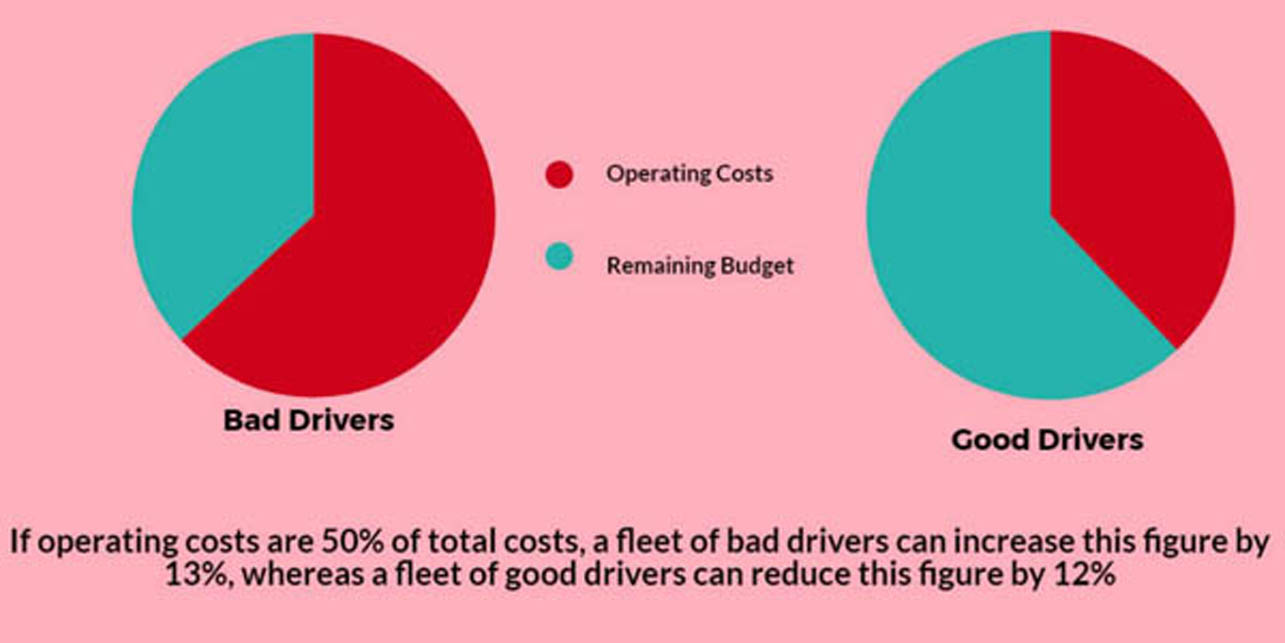Learning Zone
How to be a good driver infographic
How to be a good driver, prevent accidents and save money for yourself or your fleet!
DID YOU KNOW? Good drivers save 12% on costs, whereas bad drivers cost an extra 13% on costs!

Guiding and influencing a person, or a team how to be a good driver is an essential challenge for all fleet managers – the difference in whole life cycle costs between a fleet of good drivers compared to a fleet of bad drivers can be 25%. Data collected from Chevin’s customer base shows that the best drivers can reduce costs by more than 12%, but the worst drivers can increase costs by more than 13%.
An accident can be 36 times the cost of a basic repair, so ensuring you have a strategy to reduce road accidents within your fleet must be a priority for all fleet managers.
Increased Cost & Accident Risk
Good drivers not only save money, they are also a lot safer behind the wheel. According to NetSafeUtah.org and VeryWell.com:
- A driver with a blood alcohol level of 0.08% is 7 times more likely to be involved in a fatal motor vehicle crash
- A driver with a blood alcohol level of 0.15% is 25 times more likely to be involved in a fatal motor vehicle crash
- A driver is 3.6 times more likely to get into an accident when eating while driving
- A driver is 6 times more likely to get into an accident when talking on a cell phone while driving
- A driver is 24 times more likely to get into an accident when texting on a cell phone while driving
How to be a good driver:
Slow down:
- Speeding accounted for approximately 23% of all fatal crash accidents on the road in the UK in 2015
- Fatal crashes are four times as likely on rural “A” roads as urban “A” roads
- The risk of death is approximately four times higher when a pedestrian is hit at 40mph than at 30 mph
Avoid Distractions:
- Keep your eyes on the road, hands on the wheel and mind focused on driving
- 400 fatal road crashes involved a distracted driver “failing to look” in 2015
- A further 101 fatal road crashes were caused by contributory factors including in-vehicle distractions, distractions outside the vehicle, and phone use
Don’t drink & drive, and get plenty of rest:
- On average, over 3,000 people are killed or seriously injured each year in drink drive collisions
- Nearly 1 in 6 deaths on the road involve drivers who are over the legal alcohol limit
- Over half a million breath test are carried out each year, and over 100,000 people are found to be positive
Always wear a seat belt:
- A driver is twice as likely to die if you don’t wear a seat belt
- Drivers caught without a seat belt face on-the-spot fines of £100.
- If prosecuted, the maximum fine is £500
How Fleet Managers can improve their drivers’ performance
By storing all your driver information in one central location such as fleet driver management software, telematics or both integrated together, you can combine details such as accident rates, age, driver licence, sex, location, mileage, fuel economy and driver behaviour to help identify risk and send alerts to drivers on their own performance,
Fuel can account for around 30% of a fleet’s running costs, so there are clear benefits to educate your employees to drive more economically.
Better informed, more confident drivers also help to reduce accidents, insurance and maintenance expenses; this can also enhance and promote your organisation’s reputation and image.
The key to improving performance is measuring it – if you have a system in place that allows you to report on information, it can help you understand the causes and possible solutions.




